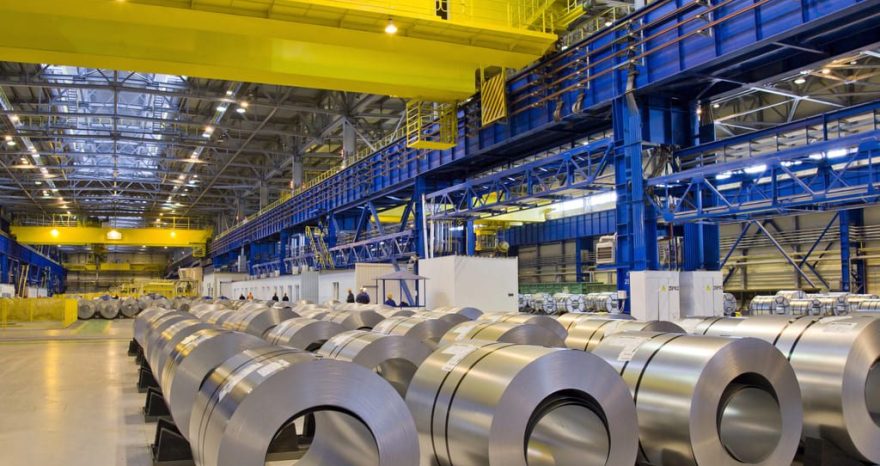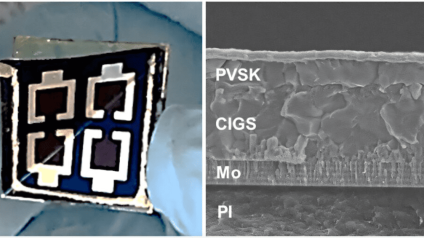The EU Competitiveness Compass aims to boost Europe's strategic autonomy, innovation, and green transition. Discover key measures on energy, climate, and industry.

The days of a weak, regulation-obsessed Europe in decline “are over.” Energy, climate, innovation, and industry policies must now be anchored to one core principle: competitiveness. That was the message from European Commission President Ursula von der Leyen as she introduced the EU Competitiveness Compass, a strategic blueprint to revitalize Europe’s economic strength.
“For the past 20-25 years, our business model relied on cheap labor from China, supposedly low-cost energy from Russia, and partially outsourced security investments. Those days are over. Today, we see Europe lagging behind the United States and China in productivity growth. We must address our weaknesses to regain competitiveness,” von der Leyen stated.
According to EU Executive Vice-President for Prosperity and Industrial Strategy, Stéphane Séjourné, the Competitiveness Compass will be “the EU’s economic doctrine for the next five years.”
This comprehensive strategy integrates measures to cut bureaucracy, develop AI gigafactories, protect European industries, and establish a unified tax regime across EU member states. It also introduces the much-debated Clean Industrial Deal and a plan for climate adaptation.
What Is the EU Competitiveness Compass?
The EU Competitiveness Compass is the European Commission’s strategic plan to strengthen the bloc’s economic position. It aims to bridge the innovation gap, ensure a sustainable green transition, and reduce strategic dependencies. The plan outlines key legislative actions and their implementation timelines.
The framework is built on three pillars:
- Closing the innovation gap
- Aligning decarbonization with competitiveness
- Reducing over-dependency and increasing security
Additionally, the document highlights five cross-sectoral “competitiveness enablers” that influence all legislative proposals:
- Regulatory simplification
- Reducing barriers in the Single Market
- Financing competitiveness
- Promoting skills and high-quality jobs
- Strengthening EU-national policy coordination
Key Goals of the EU Competitiveness Compass
The ultimate goal is to make Europe a hub for sustainable innovation and economic growth that can compete with the U.S. and China. Echoing the Draghi Report’s warning that the EU must “act or die,” the Competitiveness Compass emphasizes that without decisive action, Europe faces a slow economic decline.
The strategy sets the following objectives:
- Accelerate innovation by reducing barriers for startups and tech firms.
- Enhance competitiveness and decarbonization by fostering green markets and ensuring accessible energy.
- Boost economic security by minimizing strategic dependencies on third countries.
- Streamline regulations to cut bureaucracy and speed up decision-making.
- Create a capital union to improve investment markets for European businesses.
- Strengthen workforce skills to support future industries.
- Improve coordination between EU and member states’ industrial policies.
Pillar 1: Innovation and Competitiveness
To kickstart a new innovation cycle, the EU plans to eliminate growth barriers and boost technological development. Major initiatives include:
- Start-up and Scale-up Strategy (Q2 2025): Eases venture capital access, harmonizes regulations for innovative firms, and fosters university-industry patent commercialization.
- European Legal Framework for Startups (Q4 2025 – Q1 2026): A unified regulatory system to simplify compliance for startups operating across the EU.
- European Innovation Act (Q4 2025 – Q1 2026): Supports R&D infrastructure, enhances innovation funding, and introduces regulatory sandboxes for emerging tech.
- AI Factories Initiative (Q1 2025): Establishes AI training centers, facilitates access to cloud computing, and accelerates AI adoption in key industries.
- EU Cloud & AI Development Act (Q4 2025 – Q1 2026): Develops a secure cloud infrastructure to position the EU as a leader in artificial intelligence.
- European Biotech Act (2025-2026): Strengthens regulations to support biotech innovation in pharmaceuticals and sustainable agriculture.
- Advanced Materials Act (2026): Funds research on next-generation materials for industrial applications.
Pillar 2: Decarbonization and Competitiveness
The EU’s Green Deal has faced criticism for being too ambitious or imbalanced against industry. To address these concerns, von der Leyen has pledged to recalibrate decarbonization policies while maintaining competitiveness.
Key initiatives include:
- Clean Industrial Deal & Affordable Energy Plan (Q1 2025): Supports low-emission industrial production with investment incentives and streamlined permitting.
- Industrial Decarbonization Accelerator Act (Q4 2025): Provides funding for clean tech adoption and public-private research partnerships.
- European Grids & Electrification Plan (Q1 2026): Enhances electricity grids and boosts renewable energy integration.
- Revised State Aid Framework (Q2 2025): Makes it easier for governments to fund green technology projects.
- Steel & Metals Action Plan (2025): Supports green steel production and shields the sector from unfair trade practices.
- Sustainable Transport Investment Plan (Q3 2025): Expands infrastructure for electric vehicles and green fuels.
- European Ports & Maritime Strategy (2025): Develops hydrogen and renewable gas hubs in European ports.
- High-Speed Rail Plan (2025): Invests in rail expansion to reduce short-haul air travel emissions.
- Revised Climate Law (2025): Updates the EU’s 2040 emissions reduction targets.
Pillar 3: Reducing Strategic Dependencies and Strengthening Economic Security
The EU seeks to reduce vulnerabilities in supply chains and critical industries while maintaining open trade. Key measures include:
- Trans-Mediterranean Energy & Clean Tech Initiative (Q4 2025): Strengthens partnerships for hydrogen and renewable energy with Mediterranean countries.
- Joint Procurement Platform for Critical Raw Materials (Q2-3 2025): Ensures stable supplies of essential industrial materials.
- Public Procurement Reform (2026): Introduces a “Buy European” policy for key sectors.
- Internal Security Strategy (Q1 2025): Enhances protection for critical infrastructure, including energy grids.
- EU Climate Adaptation Plan (2026): Improves resilience to climate impacts.
- Water Resilience Strategy (Q2 2025): Strengthens EU water management policies.
- Plan to Eliminate Russian Energy Imports (2025): Accelerates renewable energy expansion and diversification.
- Supply Chain Security Plan (2025-2026): Invests in domestic production of semiconductors, batteries, and key technologies.
Regulatory Simplification & Other Horizontal Measures
A core mission of the Competitiveness Compass is to cut red tape. The EU aims to reduce reporting and administrative burdens by 25% for all businesses and 35% for SMEs.
Key simplification efforts include:
- Regulatory Omnibus Packages (March 2025): Eliminates outdated rules and aligns EU-wide regulations.
- SME & Competitiveness Check (2025 onward): Ensures new regulations do not disproportionately burden small businesses.
- Revised REACH Regulation (2025-2026): Simplifies chemical industry compliance while maintaining safety standards.
- Streamlined Reporting Requirements (2025-2026): Reduces redundant compliance obligations and implements a single EU data portal.
The Road Ahead
The EU Competitiveness Compass signals a major policy shift—one that acknowledges the need for a balance between sustainability, industrial strength, and innovation. As the strategy unfolds over the next five years, its success will depend on execution and political consensus. The coming months will reveal whether Europe can regain its economic momentum while staying true to its green ambitions.
Download EU Competitiveness Compass.












